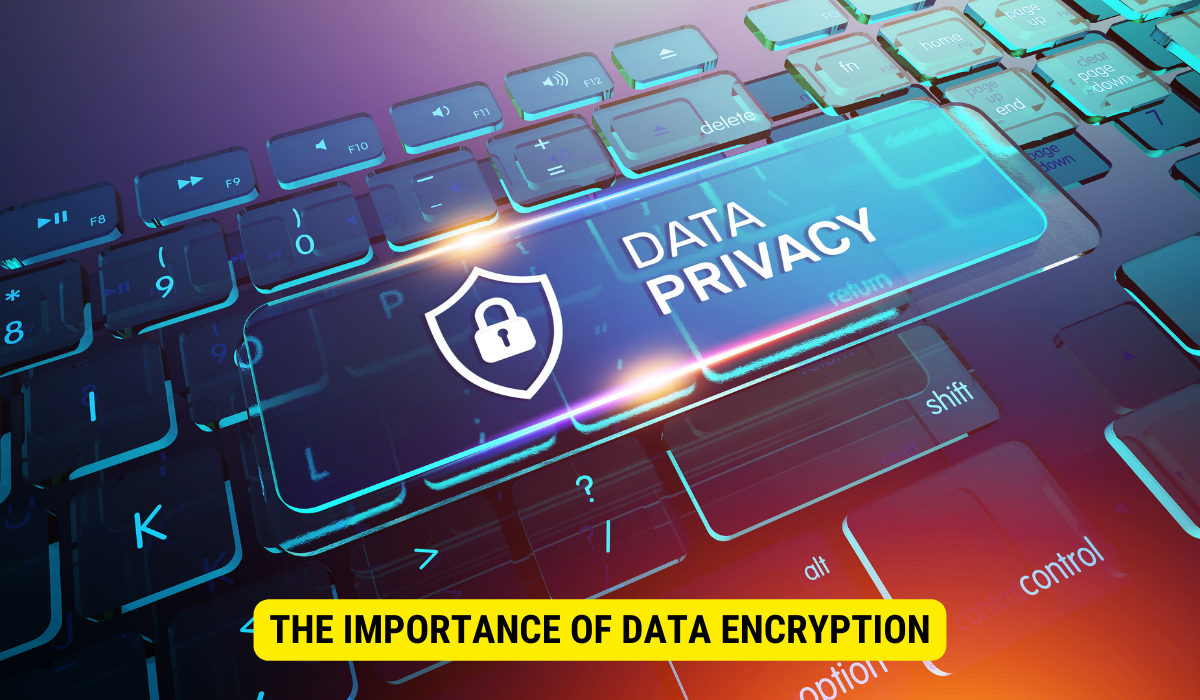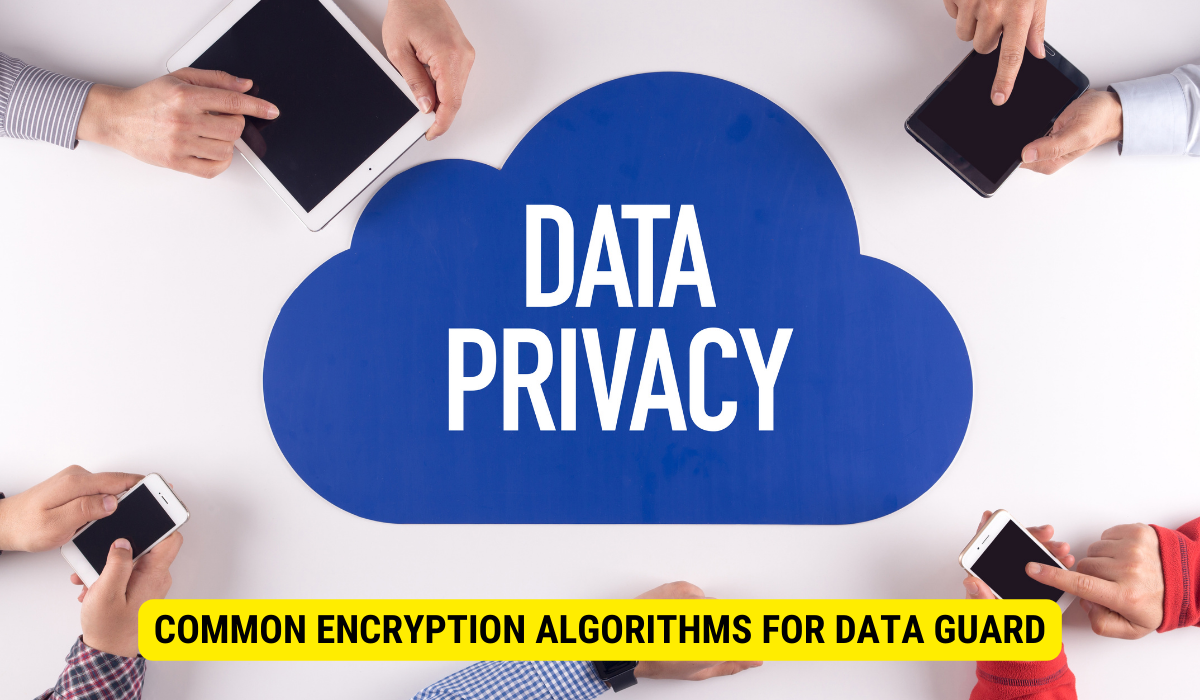Encrypting Data Guard involves assessing the existing environment, defining an encryption strategy, configuring the necessary parameters, and initiating the encryption process. Utilizing algorithms like AES for symmetric encryption and RSA for asymmetric encryption can ensure robust data protection.
Data encryption is a crucial security measure for organizations that handle sensitive information. By encrypting data, organizations can ensure their confidential information remains safe from unauthorized access. I will explore the process of encrypting data guard, a data protection solution many organizations use.
Understanding Data Encryption
The Importance of Data Encryption

Data encryption plays a pivotal role in safeguarding sensitive information. Its primary function is to shield data from unauthorized access, ensuring that only individuals with the proper authorization can decrypt and access the information. The importance of encrypting data cannot be overstated in an era characterized by an escalating number of cyber threats. This measure is now more critical than ever, serving as a vital means to thwart data breaches and preserve the confidentiality of sensitive information.
Let’s envision a scenario where you’ve just concluded a crucial business meeting and must transmit the meeting minutes to your colleagues. However, these minutes contain highly sensitive financial data that must not fall into the wrong hands. This is precisely where data encryption becomes indispensable. By applying encryption to the file containing the meeting minutes, you can guarantee that, even if an unauthorized party intercepts the file during transmission, they cannot decipher its contents without access to the decryption key.
Moreover, it’s crucial to recognize that data encryption is not confined solely to business-related situations. It also plays an equally pivotal role in safeguarding personal information. For example, when making an online purchase and inputting your credit card details, encryption ensures that your financial information remains secure throughout the transaction.
Basic Concepts of Data Encryption
Before delving into the process of encrypting data guards, it is essential to understand the basic principles of data encryption. Encryption involves converting plain text data into indecipherable cipher text, making it unreadable without a decryption key. The encryption process typically relies on various cryptographic algorithms, which determine the strength and complexity of the encryption.
The Advanced Encryption Standard (AES) is one of the most commonly employed encryption algorithms. AES, a symmetric encryption algorithm, has emerged as the prevailing method for safeguarding sensitive information. Its adoption is widespread among both organizations and governments around the globe due to the robust security it provides.
Another encryption algorithm enjoying extensive usage is the RSA algorithm, classified as asymmetric encryption. RSA operates on two keys: one public key for encryption and another private key for decryption. This form of encryption proves especially valuable in situations necessitating secure communication between two parties, such as online banking transactions or secure email correspondence.
It’s important to emphasize that an encryption algorithm’s effectiveness hinges on two critical factors: key length and algorithm complexity. Longer key lengths and intricate algorithms make decrypting data exponentially more challenging for potential attackers without the correct decryption key.
Understanding the basic concepts of data encryption is crucial for securing sensitive information. Whether you are an IT professional responsible for implementing encryption protocols or an individual looking to protect your data, having a solid understanding of encryption principles is essential.
By encrypting data guard, you can ensure that your information remains confidential and secure, even in the face of sophisticated cyber threats. So, the next time you transmit sensitive data or store it on your devices, remember the importance of data encryption and its role in safeguarding your information.
Introduction to Data Guard
Data Guard is a comprehensive data protection solution provided by Oracle. It ensures high availability, data protection, and disaster recovery for critical Oracle databases. Data Guard functions by creating and maintaining one or more synchronized replicas of a primary database, known as a standby database. These standby databases can take over the primary role in the event of a failure, providing uninterrupted access to the data.
But let’s dive deeper into the workings of Data Guard and explore the key features that make it such a powerful tool for organizations.
What is a Data Guard?

Data Guard is not just a simple backup and recovery solution; it goes beyond that. It is a robust technology that enables organizations to achieve high levels of data availability and maintain business continuity. Organizations can protect their critical data by implementing Data Guard from various failures, including hardware failures, software errors, and even natural disasters.
One of the primary components of Data Guard is the standby database. A standby database is a replica of the primary database, continuously synchronized. This synchronization ensures that any changes made to the primary database are immediately replicated to the standby database, keeping the data consistent between the two.
Furthermore, Data Guard provides the ability to have multiple standby databases, allowing organizations to distribute their data across different locations for added redundancy and disaster recovery capabilities. This feature ensures that even if one location becomes unavailable, the standby databases in other locations can seamlessly take over, minimizing downtime and ensuring uninterrupted access to the data.
Key Features of Data Guard
Data Guard offers several key features that make it a striking choice for organizations aiming to protect their critical data.
Real-time Data Replication
One of the standout features of Data Guard is its ability to replicate data in real time. This means that any changes made to the primary database are immediately propagated to the standby databases, ensuring the data is always up to date. This real-time replication minimizes the risk of data loss and allows organizations to have near-instantaneous failover capabilities.
Automatic Failover
In the event of a failure in the primary database, Data Guard provides automatic failover capabilities. This means that the standby database can automatically take over the primary role, ensuring uninterrupted access to the data. This automatic failover process is seamless and transparent to the users, minimizing any potential disruption to the business operations.
Fast Synchronization
Data Guard utilizes efficient synchronization mechanisms to ensure fast data replication between the primary and standby databases. This fast synchronization minimizes the impact on the primary database’s performance and ensures that the standby databases are always up to date. By reducing the synchronization time, organizations can achieve higher levels of data availability and minimize the risk of data loss.
Support for Various Data Protection Modes
Data Guard offers different data protection modes to cater to the specific needs of organizations. These modes include Maximum Availability, Maximum Performance, and Maximum Protection. Each mode provides a different level of data protection and performance trade-offs, allowing organizations to choose the mode that best suits their requirements and business objectives.
The Maximum Availability mode, for example, focuses on minimizing downtime and ensuring continuous access to the data. It provides synchronous replication, where transactions are committed on the primary and standby databases before completion. On the other hand, the Maximum Performance mode emphasizes performance and scalability, allowing asynchronous replication to achieve higher throughput.
The Maximum Protection mode offers the highest level of data protection by providing synchronous replication with the added benefit of data verification. In this mode, the standby database verifies the integrity of the data before acknowledging the commit on the primary database. This ensures that the data is replicated and validated, minimizing the risk of data corruption or inconsistency.
By leveraging these key features, organizations can achieve high levels of data availability, protect their critical data from various failures, and maintain business continuity even in the face of potential disasters or disruptions.
Steps to Encrypt Data Guard
Preparing for Encryption
Before encrypting the data guard, thorough preparation is necessary to ensure a smooth process. Conducting a comprehensive assessment of the existing data guard environment and identifying potential risks or vulnerabilities is crucial. Additionally, it is essential to define a clear encryption strategy and establish appropriate encryption policies and procedures.
Implementing the Encryption Process
Once the preparation phase is complete, organizations can proceed with the encryption process. The process typically involves configuring encryption parameters, such as encryption algorithms and key management systems. It is crucial to ensure that all necessary encryption components, such as encryption wallets or hardware security modules, are properly installed and configured.
After the configuration is complete, the encryption process can be initiated. It is advisable to perform thorough testing and validation to ensure the encryption process works as intended and does not introduce compatibility or performance issues.
Common Encryption Algorithms for Data Guard

Symmetric Encryption Algorithms
Symmetric encryption algorithms are widely used in data guard encryption. These algorithms involve using the same key for both encryption and decryption processes. Popular symmetric encryption algorithms include the Advanced Encryption Standard (AES), Triple Data Encryption Standard (3DES), and the Data Encryption Standard (DES).
Asymmetric Encryption Algorithms
Asymmetric encryption algorithms are also utilized in data guard encryption to enhance security. These algorithms use a pair of keys for encryption and decryption processes, ensuring that only the intended recipient can decrypt the data. Common asymmetric encryption algorithms include the Rivest-Shamir-Adleman (RSA) algorithm and the Elliptic Curve Cryptography (ECC) algorithm.
Troubleshooting Common Encryption Issues
Dealing with Encryption Errors
During the encryption process, it is not uncommon to encounter errors or issues that may hinder the successful completion of the encryption. To troubleshoot encryption errors effectively, it is crucial to have a thorough understanding of the encryption process and the underlying encryption components. Organizations should also maintain proper documentation and seek assistance from experts or support channels when necessary.
Ensuring Successful Data Recovery
Another critical aspect of data guard encryption is ensuring successful data recovery during a failure or disaster. Organizations should regularly test their data recovery procedures to verify the recoverability of encrypted data. It is also essential to establish proper backup and recovery strategies, including off-site backups and redundant systems, to minimize the impact of any potential data loss.
Key Takeaways
- Data Guard is a solution by Oracle that offers high availability, protection, and disaster recovery for critical databases.
- Encryption is crucial in safeguarding data from unauthorized breaches and maintaining the confidentiality of sensitive information.
- Symmetric encryption, like AES, and asymmetric encryption, such as RSA, are key algorithms used in Data Guard encryption.
- Data Guard supports real-time data replication, automatic failover, fast synchronization, and multiple data protection modes.
- Proper preparation and understanding of the encryption process are essential for effective encryption and potential troubleshooting in Data Guard.
FAQs
What is a Data Guard?
Data Guard is Oracle’s comprehensive data protection solution that ensures high availability, data protection, and disaster recovery for critical databases.
Why is encryption essential for Data Guard?
Encryption ensures that the data remains safe from unauthorized access, helping prevent data breaches and maintaining the integrity of confidential information.
What are the commonly used encryption algorithms in Data Guard?
AES (Advanced Encryption Standard) is commonly used for symmetric encryption, while RSA (Rivest-Shamir-Adleman) is popular for asymmetric encryption in Data Guard.
How does Data Guard ensure continuous access to data during failures?
Data Guard uses standby databases, exact replicas of the primary database, to take over the primary role during failures, ensuring uninterrupted access to the data.
How can organizations troubleshoot encryption errors in Data Guard?
Organizations need a deep understanding of encryption, maintaining proper documentation, and seeking expert assistance when troubleshooting.
Conclusion
In conclusion, encrypting data guards is essential in ensuring critical information’s security and integrity. Organizations can effectively protect their data from unauthorized access and potential threats by understanding the concepts of data encryption, familiarizing themselves with data guards, and following the necessary steps and best practices.
